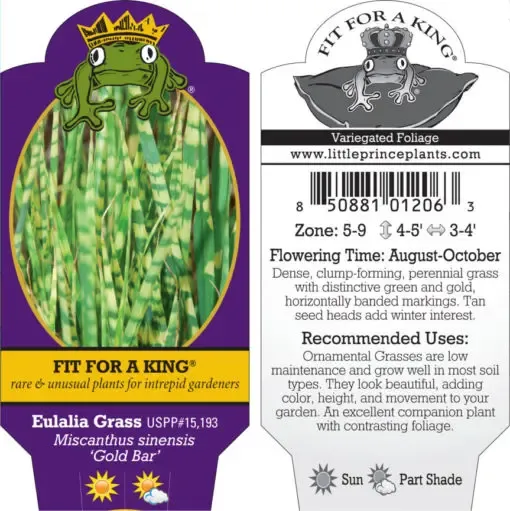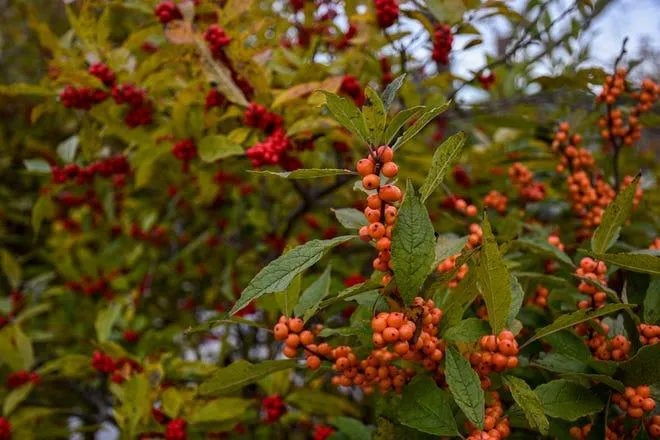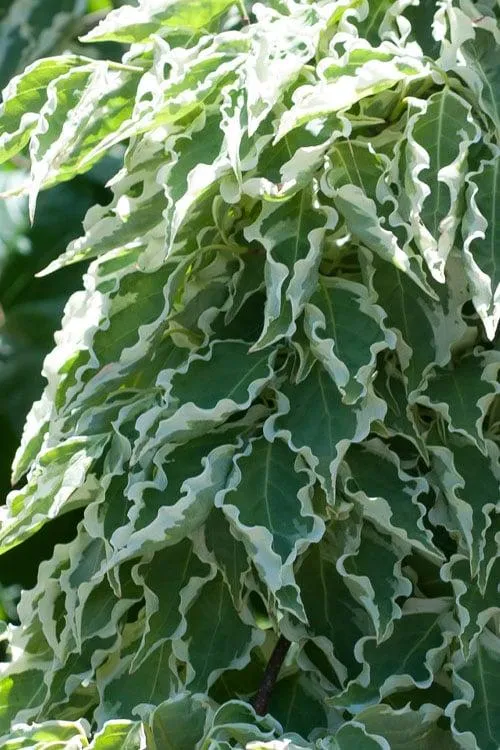
Beautiful Variegated Plants to Add Interest and Color to Your Garden
Your Guide to Beautiful White Variegated Plants
White variegation makes certain plant varieties uniquely stunning with contrasting white, cream or yellow patterns. If you’re looking to add some splashes of brightness and interest to your garden or home, these variegated kinds are worth checking out.
What is Plant Variegation?
Before getting into specific plant recommendations, it helps to understand what variegation is. Botanically speaking, variegation occurs when sections of a plant produce chlorophyll in an irregular or contrasting pattern compared to the rest of the foliage. This results in leaves, stems or flowers displaying two or more colors other than just solid green.
The white, cream or yellow patches are caused by a lack of chlorophyll production in certain plant tissues. Variegation happens naturally through genetic mutations, but some varieties are also selectively bred by horticulturists to accentuate the color contrast. It’s mostly an aesthetic trait rather than serving any purpose for the plant.
Benefits of White Variegated Plants
- Eye-catching decoration: The dramatic color blocking really makes variegated plants stand out in gardens, containers or indoor spaces.
- Light up shady spots: The lighter leaf colors reflect more light, so variegated varieties can brighten up darker corners that solid green plants may struggle in.
- Low maintenance: Variegation reduces a plant’s ability to photosynthesize, meaning growth tends to be slower and pest/disease issues may occur less frequently than all-green counterparts.
Of course, the tradeoff is variegated cultivars often have less vigor and are less hardy than plain green varieties. But their beauty makes up for it!
Top White Variegated Plant Options
1. Hosta
Hostas come in a dazzling array of variegated patterns and are top-rated perennials for shady gardens. ‘Sum and Substance’ has bold cream centers surrounded by dark green edges. ‘Francee’ offers lovely wavy white stripes. You can’t go wrong with classic hostas to light up dull spots.

2. Pothos
This versatile vine thrives as a houseplant or outdoors in warm climates. Look for ‘Marble Queen’ pothos with its white-outlined leaves edged in dark green. It’s practically indestructible and trails beautifully up poles or along shelves. From my experience, pothos is one of the low-maintenance plants for indoor decor.
3. Mondo Grass
Also called oxyopsis, mondo grass forms neat clumps of oval leaves with wide cream or yellow borders. I’ve tried ‘Variegata’ mondo grass in partial shade garden beds – it provided a lovely splash of pattern. Additionally, it holds up well throughout different seasons.
4. Coleus
These colorful annuals or short-lived perennials come in an incredible assortment of leaf patterns and colors. ‘White Heat’ features cream-centered foliage striped with green, while ‘Golden Swagger’ bears yellow patterns. Coleus thrive in sunny windowsills indoors or planted outside in spring for seasonal color.
5. Purple Passion Vine
As the name suggests, this beautiful climbing vine bears heart-shaped leaves splashed or edged with white. Try growing it on a fence, arched trellis or hanging basket for cascading foliage details. From my experience, passion vine attracts hummingbirds and butterflies to the garden too with its trumpet-shaped flowers.
Tips for Growing White Variegated Plants
While variegation may reduce a plant’s vigor somewhat, following best care practices can help your white-patterned beauties thrive:

- Provide adequate light – most need at least partial sun to maintain variegation and prevent all-green reversion.
- Water properly – variegated plants dry out faster due to less leaf surface for transpiration, so monitor soil moisture closely.
- Fertilize lightly in spring and summer – their slower growth means reduced nutrient demands compared to all-green competitors.
- Prune off any all-green stems that sporadically appear to maintain the variegated characteristic you selected the plant for.
- Protect from intense sun if foliage is burning – variegated leaves are usually more sensitive.
Following these basic care recommendations will help your white-patterned beauties look their absolute best!
Dealing with All-Green Reversion
A fairly common issue variegated plant enthusiasts may face is all-green reversion, where leaves lose their intended colored patterns over time. This sometimes happens spontaneously due to genetic mutations or environmental stresses weakening the plant.
If you notice all-green growth appearing, prune off the affected stems as close to the soil line as possible. It may take a few pruning rounds to get reversion fully under control. In extreme cases where more than 25% of new growth reverts, it may be best to replace the whole plant.
Reversion is usually not a serious problem harming the plant’s health, just itsVariegated ornamental qualities. With proper care and selective pruning, most variegated cultivars can be maintained true-to-form for many years.
Inspire Your Creativity with White Variegation!
Whether decorating your home or garden, white-patterned plants open up imaginative design possibilities to make once-drab corners sing. Their versatility across many different growing conditions also means almost anyone can enjoy the visual pop variegation provides.

I hope this guide has given you some top plant ideas and growing tips to beautifully showcase variegated foliage. Please let me know if you have any other questions! With the right selections and care, white variegation can become a highlight of your spaces for seasons to come.
Popular White Variegated Houseplants
| Plant | Care Level | Light Needs | Size |
|---|---|---|---|
| Chinese Evergreens | Easy | Low to bright indirect light | Up to 3 feet tall and wide |
| Silver Flame Philodendron | Easy | Medium to bright indirect light | Up to 6 feet tall, trailing |
| Peperomia | Easy | Medium to bright indirect light | Up to 1 foot tall and wide |
| Prayer Plant | Easy | Medium to bright indirect light | Up to 2 feet tall and wide |
| ZZ Plant | Very Easy | Low light | Up to 4 feet tall |
FAQ
-
What causes white variegated leaves on plants?
There are a few different reasons why some plants develop white-colored areas on their leaves. Most often, it’s due to a lack of chlorophyll in certain parts of the leaf. Variegation can be genetic or caused by virus or nutrient issues.
-
Are variegated plants harder to care for than solid green plants?
Not basically. Variegated plants will need mostly the same care as their green counterparts. They still need bright light and correct watering. But variegated leaves contains less chlorophyll so they may grow a little slower and be more affected by nutrient deficiencies or too much shade. Proper care will keep them appearing stunning.
-
Why are variegated plants so expensive?
Nurseries charge more for variegated cultivars for a couple reasons. First, variegation mutations arise rarely in nature so producing new variegated varieties requires time and luck. Also, variegated cuttings or seeds are less likely to breed true since the variegation could revert back to solid green. This uncertainty causes a higher cost that gets passed to buyers. However, established variegated plants can sort of multiply over time to bring the price down.
-
Can variegation appear in new leaves after a plant is established?
Sometimes, perhaps. While variegation is usually genetic and won’t spontaneously show up out of nowhere, it appears some plants may develop variegated leaves in response to environmental stresses like low light or nutrient deficiencies later in life. Gardening experts suggest this “somantic variegation” likely arises from a plant’s innate genetic variability rather than being pure mutations. But is it just a plant’s way to adapt? Some experts believe these new variegated shoots may act like a “distress signal” to attract pollinators.

-
Will variegated leaves revert back to solid green?
It’s possible. The white variegated pattern can fade or disappear completely over time, reverting to all green leaves. Surprisingly, this doesn’t always mean the plant is unhealthy. Variegation may behave like an unstable gene that occasionally turns back “on” or “off”. Growers try doubling up on plant growth hormones and bright light to encourage the variegation to remain stable. Nevertheless, the ultimate fate of a variegated plant’s leaves appears unpredictable at times.
-
What are some common variegated houseplants?
Three very popular variegated indoor plants are pothos, philodendron, and spider plants. With their trails of heart-shaped green-and-white leaves, pothos varieties are nearly foolproof. Philodendrons come in compact or climbing forms showing cream or yellow variegation. And variegated spider plants offer long straps of grassy foliage dappled in cream or pink tones. These low-light loving plants add amazing interest to any room. What other fascinating variegated plants have you seen potted up for inside spaces?
-
Are white variegated plants suitable for shady spots in the landscape?
Good question! While most variegated plants require ample daylight, some white-patterned varieties can tolerate low-light conditions better than their deep green counterparts. Variegated hostas, astilbes and heucheras, for instance, will grow successfully in partly shaded areas alongside ferns and hostas. At the same time, giving them as much eastern or afternoon sun as you can will intensify their color contrast and help discourage leaf rust and fungal spots that tend to strike in shadier zones. So yes, variegated plants offer a bright solution for gardens with limited sun exposure!